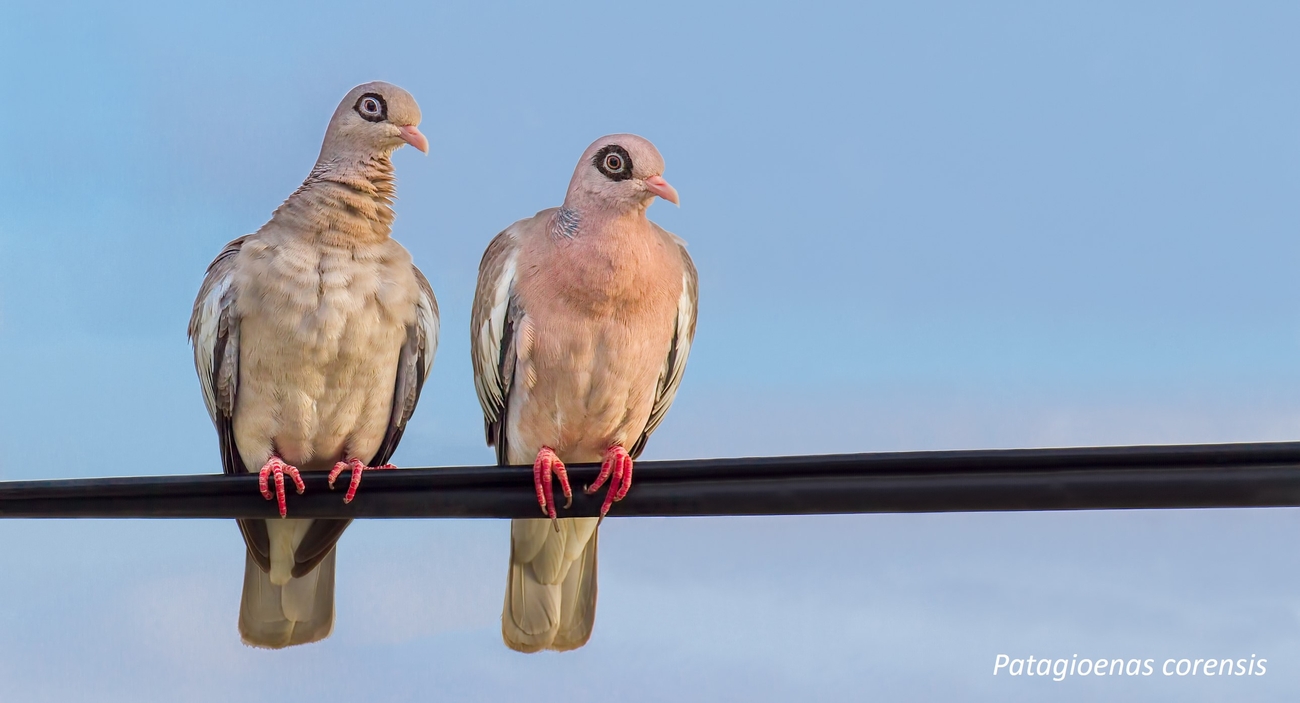On the island of Saint-Martin, an unusual species has appeared in the landscape over the past decade: the Bare-eyed Pigeon (Patagioenas corensis). Christopher Cambrone, our scientific program coordinator and specialist in columbids in the Antilles, investigated with his colleagues. His results confirm the alarming scenario of the species’ rapid invasion of the island, with potential ecological consequences.
Expansion of the Bare-eyed Pigeon in Saint-Martin
Native to South America, the Bare-eyed Pigeon was first spotted on the island of Saint-Martin in 2013. Since then, numerous other sightings have occurred, but no scientific study had confirmed the invasive nature of the species. To better understand the spatio-temporal dynamics of the Bare-eyed Pigeon on the island, researchers combined field observations with data collected through citizen science. Thanks to the characteristic appearance of the species, especially the large blue circles around its eyes, the Bare-eyed Pigeon is easy to recognize. This makes observations by amateur and experienced naturalists reliable enough to be used. The pigeon sightings compiled in the eBird database were used as the basis of the study.

Observation of a Bare-eyed Pigeon nesting in Saint-Martin © Anthony Levesque
The various analyses conducted confirmed the species’ expansion. First, the number of pigeon sightings has significantly increased over time, with only about twenty reports between 2013 and 2019, but over 60 between 2023 and early 2024. Second, it is increasingly common to observe multiple individuals at once rather than just one.
In addition to a significant increase in population size, the results also highlight a spatial expansion. Initially reported in the northern and western regions of the island, the species has since spread southward. Moreover, this expansion has been accompanied by habitat diversification. Initially documented only in coastal habitats, the pigeon now also inhabits forested and urbanized areas.
Ecological Implications for Saint-Martin and Neighboring Islands
Invasive exotic species pose a major concern for the fragile ecosystems of insular environments. These species can outcompete or prey on local species. The proliferation of the Bare-eyed Pigeon thus threatens native bird species, particularly pigeons and doves, which likely compete with it for food resources and nesting sites. Unfortunately, the presence of the Bare-eyed Pigeon in Saint-Martin also poses a threat to the ecosystems of neighboring islands. The species’ flight capabilities, possibly aided by favorable winds, could allow it to reach other territories such as Anguilla and Saint-Barthélemy and establish itself there. The species’ invasive potential could be further heightened by its adaptability to urban environments and its natural preference for arid and semi-arid environments. Climate change is expected to lead to significant drying of the insular Caribbean during the 21st century, thereby favoring the regional expansion of the pigeon.

The Bare-eyed Pigeon among other Columbidae present in Saint-Martin © Caribaea Initiative
Immediate Measures Needed
Scientific data indicate that it is crucial to act quickly after the introduction of an exotic species to hope to control or eradicate it. Beyond this time window, the costs and efforts required increase prohibitively. The authors of the study therefore recommend immediate action to manage this invasion in Saint-Martin. They suggest quickly including the bird on the list of huntable species and training hunters to identify the species. The authors also advocate for close cooperation between the administrative authorities of the French and Dutch parts of the island to coordinate eradication campaigns and raise public awareness. Only rapid actions will curb the rapid spread of the species and protect the island’s ecosystems and surrounding territories.
Reference
Cambrone, C., Levesque, A. & Cézilly, F. 2024. Using citizen science and field surveys to document the introduction, establishment, and rapid spread of the Bare-eyed Pigeon, Patagioenas corensis, on the island of Saint-Martin, West Indies. Biology 13: 585. https://www.mdpi.com/2079-7737/13/8/585
 This study was conducted as part of the ESPACYPA project, led by the Caribaea Initiative association with financial support from the Fédération Départementale des Chasseurs de Guadeloupe and the DEAL Guadeloupe (via the France Relance Plan).
This study was conducted as part of the ESPACYPA project, led by the Caribaea Initiative association with financial support from the Fédération Départementale des Chasseurs de Guadeloupe and the DEAL Guadeloupe (via the France Relance Plan).

